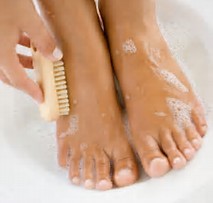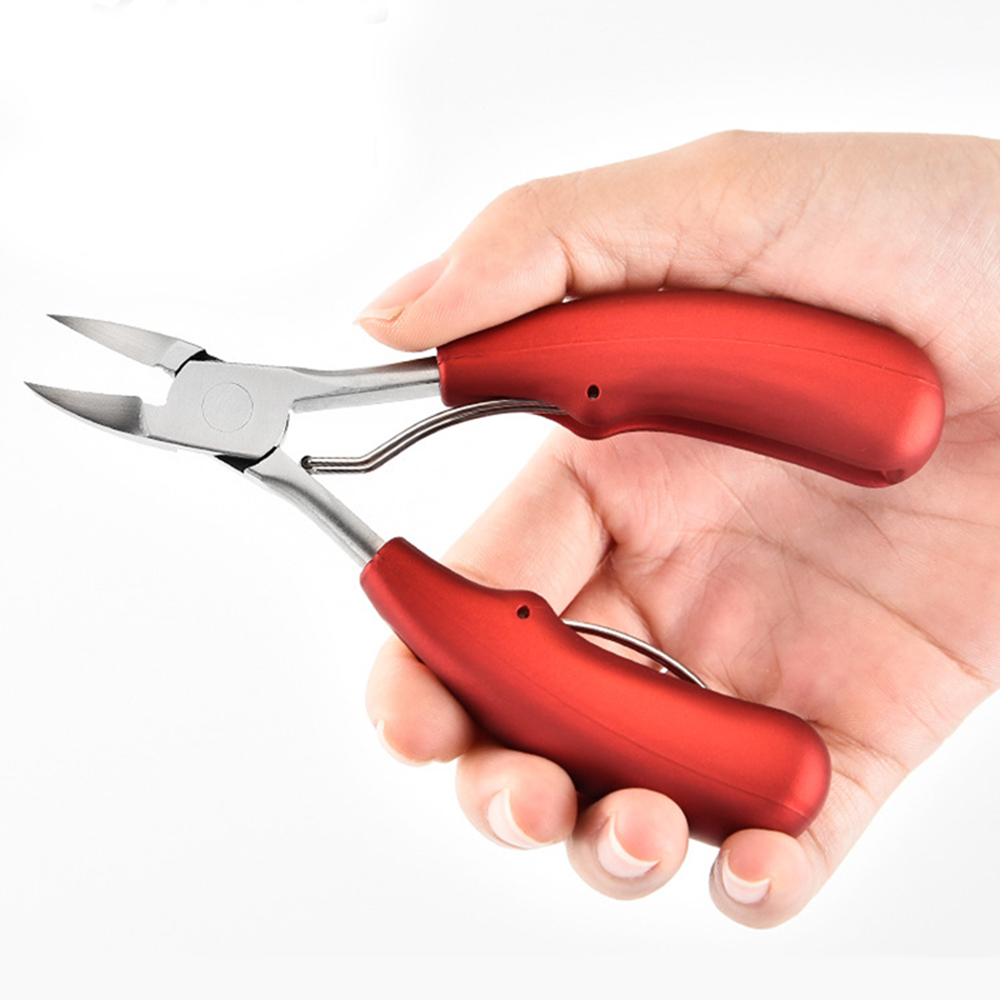Bacterial Infections





Bacterial Infections
Signs of bacterial infection of the skin include pain, redness, draining, swelling, and pitting and sloughing of the skin. In severe infections, malaise, loss of appetite, fever, chills, nausea, and vomiting can occur. It is always safest to have a suspected infection evaluated by a medical professional. Any one experiencing symptoms of infection should seek immediate medical attention.
An ingrown toenail can puncture the skin and cause a painful bacterial infection, commonly on the big toe. In minor cases, soaking the infected toe in warm soapy water twice daily and covering the site with iodine or a topical antibiotic and a bandage can help heal the infection. Check the nail and remove any sharo edges that may be the cause of the infection. For recurrent in fections, a podiatrist may need to care for the nail. See the chapter on nails for more information.
Feet that sweat excessively are especially vulnerable to an infection that may mimic a bacterial infection but is caused by a type of fungus known as yeast. Candida albicans is a common yeast that thrives in warm, moist environments, which makes the skin between the toes an ideal location for infection. White, sloughing skin with surrounding redness is a sign of Candida albicans infection.
This yeast infection is often mistaken for athlete's foot, but is not treatable with some of the more common over the-counter athlete's foot medications. If a suspected case of athlete's foot does not improve after two to three days of using topical antifugal medications, then a b acterial or candida infection may be present. Seek care from a medical professional.
Reference: Great Feet for Life: Paul Langer, DPM
Articles - Latest
- A yoga teacher says this five-minute stretch is all you need to maintain flexibility in your spine
- Can't do a deep squat? Use this coach's four-step plan
- 6 Reasons Your Feet Are So Itchy
- Surprising Benefits of Using Bay Leaves on Your Feet
- I run 50 miles a week and this is my go-to 20-minute yoga-for-runners workout to boost my flexibility
- How to do hanging leg raises with perfect form, according to trainers
- The two exercises everyone should add to their strength workouts to see results, according to an expert trainer
- 1 year of heavy strength training could offer 4 years of benefits, study suggests
- Research Has Unveiled How Many Sets You Need to Do to Build Muscle
- I did 50 frog crunches every day for a week — here's what happened to my abs
- 10 physio-approved exercises for runners that will help you build strength and mobility
- Forget sit-ups — this 3-move standing ab workout chisels your abs and obliques
- What to do when plantar fasciitis is so bad you can't walk
- Five exercises better than side bends to sculpt strong obliques
- Forget Russian Twists — this 10-minute stability ball workout targets your abs and glutes
- Professor explains how we are all doing one exercise wrong and it is causing us pain
- Supplies, Description, and Usage - Tech Nails-2
- Supplies, Description, and Usage - Tech Nails
- Exercises for Plantar Fasciitis
- Shoes, insoles and splints: Cushioning and support - Plantar fasciitis
- 10 best bum workouts and 25 bum exercises for a 🍑'ier butt
- The dos and don’ts of running when you’re over 40
- This 30-minute workout can be done from just about anywhere
- I teach stretching routines for a living — 3 exercises that strengthen your hips and open your hamstrings
- Somatic exercise has gone viral promising to lower cortisol levels, ease stress, and boost health - so, does it actually work?
Articles-Popular
- Home
- Calluses and Corns-4-Padding and Insoles To relieve Pressure
- Add Muscle, Build Stamina and Fire up Your Metabolism with Our Three-Move Strongman Circuit
- The two exercises everyone should add to their strength workouts to see results, according to an expert trainer
- Appreciate Your Feet
- Contacts
- Therapy Price List- Aromatherapy - Counselling
- WEB - LINKS
- The Awareness of Foot Care
- Nail Technician Resume
- Join us as a Therapist
- Blisters on the Feet
- Skin Care-Feet
- Galleries
- TCM - Therapy Prices
- Podiatry/Chiropody Price List
- Bacterial Infections
- Nail Technician Job Description
- Itching Skin on the Feet
- Athlete's Foot
- Sweaty or Smelly Feet
- Gallery - Pedicured Feet
- Appointments
- Calluses and Corns - 2
- Skin Changes Associated with Blood Flow





